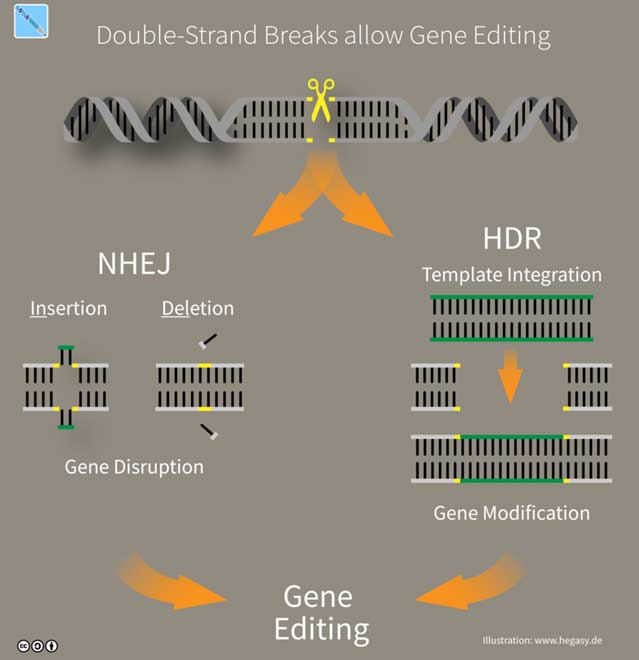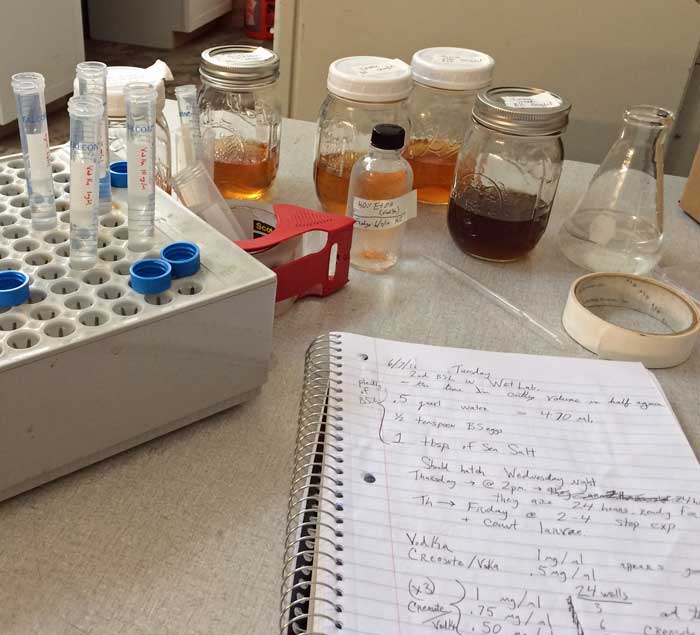author: Kevin Curran PhD
updated: 8-7-2019
Welcome to the intriguing world of DIY biology
Universities and pharmaceutical companies are no longer the only platforms available for scientists. Many independently minded scientists are performing experiments in small, privately funded labs. Some biologists work from makeshift labs in their own basement, others join community lab spaces that are open to the public. These small, independent labs are part of a broader movement referred to as Do-it-yourself biology (DIY biology). The phrase ‘biohacking’ is often used to describe this process of underground or non-institutional bio-technology.
The DIY biology movement has been gaining traction for the past decade. In the US, the movement began in San Francisco. This makes sense, as the Bay area is densely populated with tech/biotech savvy people and the entrepreneurial ethos is strong in this part of the country.
As early as 2005, Rob Carlson wrote in a Wired article, “The era of garage biology is upon us. Want to participate? Take a moment to buy yourself a lab on eBay.”
In the past decade, DIY community labs have sprung up in most of the main biotech cities across US and Europe. BioCurious in Silicon Valley is one of the first of these organizations. On any given day, participants at BioCurious may include hobbyists, out-of-work scientists or entrepreneurs in need of an incubation space for a business venture.
If you don’t live near one of these Biotech hubs, then feel free to join the broader community on this Biohacking Facebook Group. I’ve been following along with this group for a few years now, it is both inspiring and terrifying to watch as non-professionals try to cobble together various genetic projects.
When trying to wrap your brain around the current status of genome modification and CRISPR, you really need to take the DIY biology world into account.
As discussed on our CRISPR page, modifying DNA with CRISPR is neither prohibitively expensive nor is it prohibitively difficult to perform. This means that a moderately funded, DIY biology lab can pursue gene therapy projects.
Furthermore, as discussed in our regulations section, the main form of federal control over genome modification centers on restricted access to federal funding.
In summary, if you are not reliant on federal grants, you are free to tinker around with CRISPR experiments. Receiving FDA approval for a gene therapy product is another story, however, experimenting with human DNA is permissible.
To learn more about this topic, check out my review of the regulatory landscape surrounding genome editing.
How does CRISPR alter DNA?
Once the CRISPR components (guide RNA and CAS-9) have delivered a double stranded break to a strand of DNA, there are 2 options available to re-seal the break. NHEJ brings blunt ends together in an error-prone mechanism that often disrupts gene function. HDR integrates a DNA repair template, which allows the introduction of new genetic sequence. Both options alter the original genetics. Here is more information on the biology of CRISPR.

photo: Guido4, CC BY-SA 4.0, Wikimedia Commons
In Oakland, The Odin company will happily sell any customer a surprisingly affordable DIY CRISPR kit. Their kits are designed to help a non-scientist use CRISPR to mutate bacteria. The Odin originally offered a similar kit to mutate human DNA, but that human kit is no longer available, thank goodness.
Think this is science fiction? It’s not. It’s non-fiction. Whether you like it or not, this brave new genome world is upon us.
DIY biology regulation?
The world of DIY gene editing has been, for the most part, an unregulated space. If you’re not running clinical trials and putting patient lives at risk – there is quite a bit of wiggle room with genome tinkering…
To that point, in 2017, the CEO of The Odin, a bio-hacker named Josiah Zayner, attempted to modify his own genome in front of a live audience. While drinking scotch, Josiah injected his muscle cells with a CRISPR plasmid that should mutate a gene called myostatin. In theory, this could increase the size of the affected muscle tissue. As far as I know, this public stunt did not succeed in boosting muscle mass.
It should also be noted that, in early 2018, Josiah publicly expressed regret over the stunt. He is now concerned his DIY CRISPR demonstration could lead to other folks hurting themselves while performing similar actions.
I’ll admit when I did it, it was very provocative. It was very, very, very provocative—kind of on purpose, kind of on accident. I wanted people to recognize what was [possible] with this technology. I wasn’t trying to give myself bigger muscles. I wasn’t trying necessarily to genetically modify myself….
There’s no doubt in my mind that somebody is going to end up hurt eventually.
This brings up an interesting regulatory question.
Is it legal to self-experiment on your own genome? It seems this is a bit of a grey area with federal regulators. Conducting clinical trials while seeking FDA approval of a new drug is both very expensive and very regulated. However, according to Brian Hanley, self-experimentation with gene therapy is legal. Brian Hanley is the founder of a small DIY company called Butterfly Sciences. Butterfly researches gene therapies for anti-aging and other pursuits.
Hanley says he did not secure the approval of the FDA before carrying out his experiment either. The agency requires companies to seek an authorization called an investigational new drug application, or IND, before administering any novel drug or gene therapy to people. “They said ‘You need an IND’ and I said, ‘No, I don’t,’” recalls Hanley, who traded e-mails with officials at the federal agency. Reference.
New developments regarding the legality of self experimentation
Nov. 2017: In response to a few widely publicized accounts of self experimentation, the FDA just issued a statement clarifying that it is not legal to sell gene editing kits to the public.
FDA is aware that gene therapy products intended for self-administration and ‘do it yourself’ kits to produce gene therapies for self-administration are being made available to the public. The sale of these products is against the law. FDA is concerned about the safety risks involved.
The FDA also clarified that researching human therapies with CRISPR or other gene editing techniques is regulated by the FDA.
Gene therapy products are regulated by the FDA’s Center for Biologics Evaluation and Research (CBER). Clinical studies of gene therapy in humans require the submission of an investigational new drug application (IND) prior to their initiation in the United States, and marketing of a gene therapy product requires submission and approval of a biologics license application (BLA).
Clearly the FDA is well aware of the DIY biohacker world and is scrambling to catch up and regulate.
You can read more about this FDA statement here.
Ok, so the FDA does not approve, but what about laws? Are there any laws regulating DIY gene editing in humans? As of July 30, 2019 – the answer is YES, a state law.
2019 update: On July 30, 2019, the first American law was passed that regulates the use of CRISPR. Republican state senator, Ling Ling Chang, wrote this bill for California state law that prevents companies from selling CRISPR kits designed to modify human DNA. This bill was obviously written as a direct challenge to Josiah Zayner, the California operating The Odin. As mentioned above, Josiah’s company sells genetic-engineering supplies but he no longer sells the kits that modify human cells. Clearly, California meant this state law to serve as a warning shot to discourage anyone else from peddling human CRISPR kits.
What about modifying the DNA of animals, such as dogs or farm animals.
Is this legal? Well, it’s another grey area. The FDA is in the process of creating new regulations to address these pursuits. David Ishee, a dog breeder and biohacker from Mississippi, is on the forefront of this world. David is attempting to fix a genetic problem with pure bred Dalmations. In January of 2017, the FDA let David know they are not thrilled with his Dalmatian project. The FDA now regards gene therapy on a commercially sold animal to be a ‘veterinary drug’ and, therefore, subject to fees and regulations.
Related note on the FDA: The FDA is also in charge of regulating CBD, the non-psychoactive chemical from cannabis. Here is my recent article updating the public on the FDA regulatory landscape of CBD.
It seems clear that the DIY biology movement is plowing forward in the gene therapy arena.
CRISPR has massively democratized this pursuit. Sole entrepreneurs with modest budgets can get involved and begin tinkering with the blueprint of life.
Keep in mind, these DIY biology examples only provide a snapshot of what is happening in the US. It is anyone’s bet what is happening in small privately funded labs of China, Syria, Iraq or other less regulated nations. I have not heard of any biohacking CRISPR type projects focused on human germline editing (US or internationally). However, if anyone has information on this, please pass it along.
Clearly, the DIY CRISPR world is fascinating to me.
I do think that progress made in this world has the capacity to move science forward into exciting directions (i.e. new cures for diseases). I also think that through the democratization of science, we may see the production of generics that could deliver therapies at a tiny fraction of their retail price.
However, the idea of unregulated citizens editing DNA is also terrifying. Creative and thoughtful biohackers are not the only people who experiment in their basements. Dark and seedy criminals also operate out of basements. In theory, gene modification could be used to hurt individuals, to cheat during athletic competition or to create designer babies for the already wealthy and the already privileged.
Ideally, the right touch of federal regulation could filter out some of the worst characters in this DIY space, but also leave the good-natured entrepreneurs ample runway to improve humanity.
I look forward to watching this exciting world develop.
excerpt from article on biohacking CRISPR
Josiah Zayner, CEO of the biohacking-promoting startup The Odin, held up a syringe. “This will modify my muscle genes to give me bigger muscles,” …
In front of dozens of onlookers, he leaned against a table and jabbed the long needle into his left forearm. Then he took it out, wincing a little, and added, over applause and chuckles of disbelief, “I’ll let you know how it works out.”
Asked for comment on Zayner’s project, an FDA spokesperson said that in general, if a scientist wants to test an unapproved drug in humans, they must notify the FDA beforehand.
Pauwels says that a scientist is required to get approval to conduct research on humans — but not when the research subject is themselves, as in Zayner’s case. “That is a blind spot in regulation,” she said.
…Pauwels said that Zayner is toeing the line. “As soon as you don’t make any health claims and don’t assess risks and benefits, you are in that gray zone where you are using your First Amendment rights, you’re just communicating,” she said. “That could be an issue that comes under the FDA at some point. We might see more and more phenomena of that kind.”
